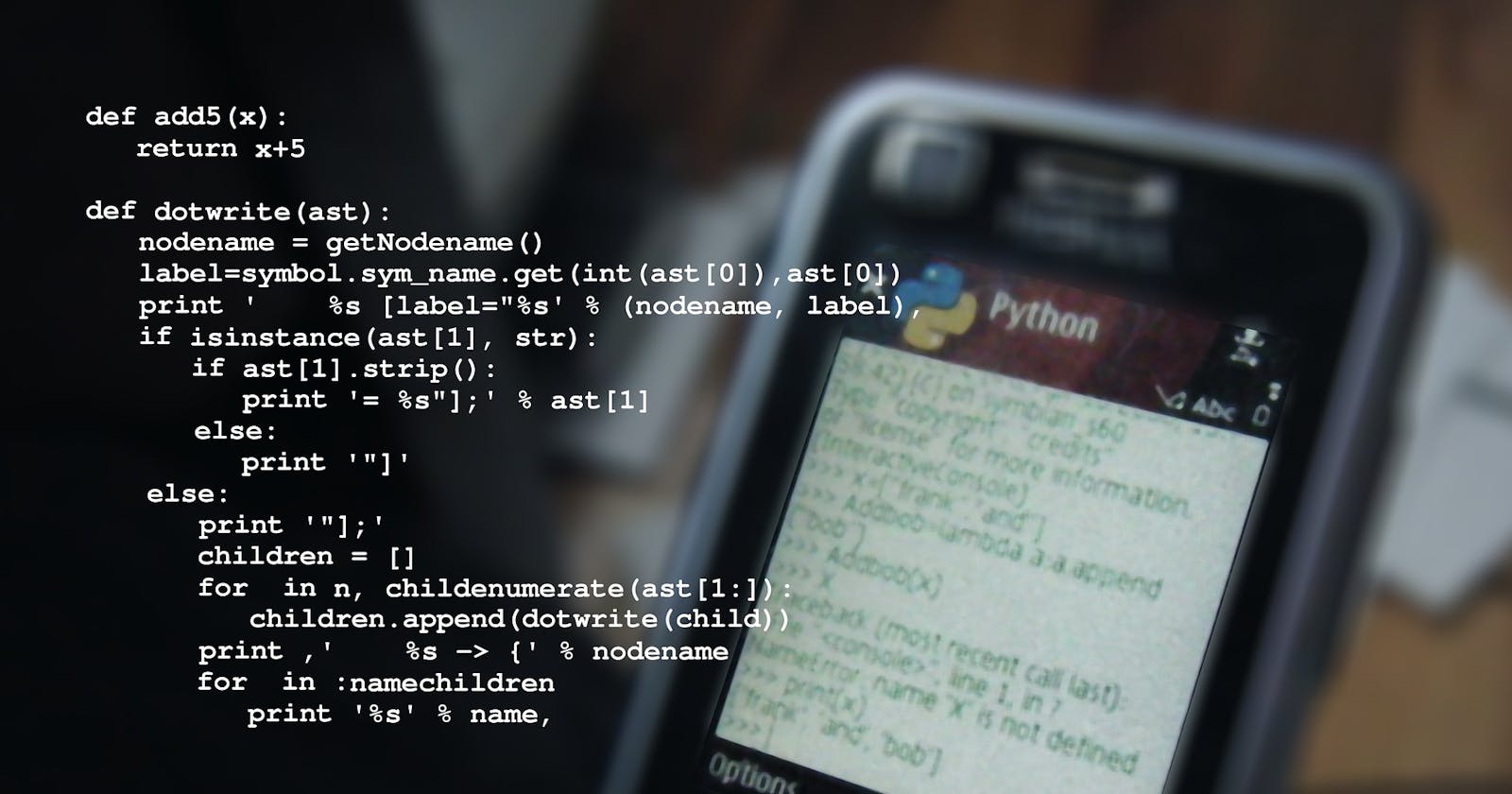
Chalk writing – OOP, Object Oriented Programming
The object-oriented programming paradigm emphasizes the use of objects and classes to organize code (OOP). It is widely used in software development and has replaced the standard practice for constructing complex systems. In this blog, we'll go over the meaning, importance, and operation of OOP.
- Introduction to Object-Oriented Programming
Object-oriented programming is a paradigm for computer programming that is based on the concept of objects. An object is a data structure that contains both data and methods that may be applied to that data. OOP aims to produce manageable, reusable, and modular code. Code fragments can be combined into reusable objects with OOP so that complex systems can be built out of them.
- Principles of Object-Oriented Programming
There are four principles of Object Oriented Programming that are commonly referred to as the SOLID principles. These principles are:
Single Responsibility Principle (SRP): A class should have only one reason to change.
Open-Closed Principle (OCP): A class should be open for extension but closed for modification.
Liskov Substitution Principle (LSP): Objects of a superclass should be able to be replaced with objects of its subclasses without affecting the correctness of the program.
Interface Segregation Principle (ISP): Clients should not be forced to depend on interfaces that they do not use.
Dependency Inversion Principle (DIP): High-level modules should not depend on low-level modules. Both should depend on abstractions.
These guidelines offer a means of producing adaptable, maintainable, and comprehendible code.
- Classes and Objects
An OOP blueprint for making things is a class. An object's class determines what properties and capabilities it will have. When an object is created, it becomes a class instance. An object's unique set of attributes and methods can be utilised to manage the data it holds.
- Encapsulation
A class is an OOP blueprint for creating objects. The characteristics and powers an object will have are determined by its class. A class instance is formed when an object is created. The distinct properties and methods of an object can be used to manage the data it contains.
- Inheritance
A class can inherit characteristics and methods from a superclass using the OOP concept of inheritance. A superclass is a class that is higher up in the inheritance hierarchy. A subclass is a class that originated from a superclass. By allowing subclasses to inherit the traits and powers of their superclasses, it is feasible to create new classes that are comparable to ones that already exist.
- Polymorphism
In object-oriented programming, the ability of an object to adopt several forms is referred to as polymorphism. Polymorphism allows a subclass to implement its methods or override those of its superclass. This makes the code more adaptable and could make maintenance simpler.
Benefits of Object-Oriented Programming
There are several benefits of Object Oriented Programming, including:
Reusable code creation is made possible by OOP, which can help developers save time and effort.
Maintainability: OOP makes it simpler to update and maintain code because changes to individual objects or classes don’t affect the program as a whole.
Flexibility: OOP gives developers the ability to write adaptable code that is simple to change or expand.
Simple to understand: OOP offers a method for classifying and organizing code into objects, which can make the code simpler to comprehend and navigate.
Examples of Object Oriented Programming
Some programming languages, including Java, support OOP.
many others, including C++, Python, and Ruby. Now let’s look at a Python-based OOP example.
Let’s say that we wish to develop a program that can represent a bank account. With features like account number, amount, and account holder name, we may make a class called “BankAccount.” We can also specify procedures that can be used to change the data included in the object, such as deposit and withdrawal.
Here’s an example code:
class BankAccount:
def __init__(self, acc_no, acc_holder_name, balance):
self.acc_no = acc_no
self.acc_holder_name = acc_holder_name
self.balance = balance
def deposit(self, amount):
self.balance += amount
print(f"Deposit of {amount} successful. New balance is {self.balance}")
def withdraw(self, amount):
if self.balance >= amount:
self.balance -= amount
print(f"Withdrawal of {amount} successful. New balance is {self.balance}")
else:
print("Insufficient balance")
We have defined a class called BankAccount in this code. The class contains three properties: balance, acc no, and acc holder name. Also, we have defined the terms “deposit” and “withdraw.” The deposit method updates the object’s balance property by adding a certain amount as input. The withdraw method accepts a sum as input and deducts it from the object’s balance property—but only if there is enough balance.
We can create an instance of this class by calling the constructor and passing in the required arguments:
account1 = BankAccount("12345", "John Doe", 1000)
We can then call the methods of this object:
account1.deposit(500)
account1.withdraw(2000)
This will output:
Deposit of 500 successful. New balance is 1500
Insufficient balance
This is just a simple example, but it illustrates how OOP can be used to create modular and reusable code.
Conclusion
Object-oriented programming is a powerful paradigm that provides a way to write modular, reusable, and maintainable programs. It has the concepts of objects and classes as its cornerstone, and it gives several benefits like code reuse, maintainability, and flexibility. By following the SOLID guidelines and employing the concepts of encapsulation, inheritance, and polymorphism, we can create simple, manageable code. OOP should be mastered by every programmer because it is frequently used in the creation of software.

Object-oriented programming benefits
OOP has several advantages that make it a popular choice among programmers. Some of the benefits are:
1 Code Reusability
Code reuse is one of object-oriented programming's main benefits. You can write classes using OOP that can be applied to various sections of your code. Since you won't have to write the same code repeatedly, this can save you a tonne of time and work.
2 Maintainability
OOP organizes code into classes and objects, which makes it easier to maintain. This makes it simpler to update and modify code as needed. Encapsulation also ensures that changes to one section of the code won't have an impact on other sections.
3 Flexibility
As you may design classes that can be extended or modified without affecting other sections of the code, object-oriented programming offers a lot of freedom. This makes it simpler to add new features to the code and react to evolving requirements.
4 Modular Development
Modular development is encouraged by object-oriented programming since it divides the code into smaller, easier-to-manage chunks. As each class can be tested independently before being incorporated into the broader system, this makes it simpler to write and test code.
Object-oriented programming's drawbacks
While OOP has many advantages, it also has some disadvantages. Here are a few:
1 Complexity
OOP can be more complex than other programming paradigms. It requires a good understanding of classes, objects, and inheritance to be able to use it effectively.
2 Overhead
In comparison to other programming paradigms, object-oriented programming may have more overhead. This is because calling methods and instantiating objects both require some extra code overhead.
3 Performance
OOP can sometimes have performance issues. This is because of the overhead associated with objects and method calls. Additionally, some Object Oriented Programming languages, such as Java, use garbage collection, which can have an impact on performance.
Conclusion
The popular programming paradigm known as object-oriented programming offers a method for creating modular, reusable, and maintainable code. It offers several benefits like code reuse, maintainability, and flexibility and is built around the concepts of objects and classes. Yet it also has certain negative aspects, such as complexity, overhead, and performance issues. By following the SOLID guidelines and employing the concepts of encapsulation, inheritance, and polymorphism, we can create simple, manageable code. Being used so frequently in software development, object-oriented programming is a skill that every programmer should possess.
Tips for Learning OOP
If you’re new to OOP, here are some tips that can help you get started:
1 Understand the basics
It’s crucial to have a solid grasp of the fundamentals of programming before delving into object-oriented programming. Variables, data types, loops, and conditional statements should all be known to you.
2 Learn the concepts
Ascertain that you are familiar with the ideas of objects, classes, inheritance, encapsulation, and polymorphism. You will better comprehend how OOP functions if you are familiar with these basic ideas.
3 Practice
When studying Object Oriented Programming, practice is crucial. Work your way up to more sophisticated programs starting with simpler ones. You will improve your abilities and gain more OOP comfort as a result.
4 Read code
OOP may be learned quite effectively by reading other programmers’ code. You can study the code of other programmers to see how object-oriented programming is used in their work.
5 Work on projects
Object Oriented Programming can be learned by working on projects. You can utilize the ideas you’ve learned to solve actual issues, and you can observe how object-oriented programming can be applied to produce modular, reusable, and maintainable code.
Conclusion
The powerful programming paradigm known as object-oriented programming can be used to produce modular, reusable, and maintainable programs. It offers several benefits like code reuse, maintainability, and flexibility and is built around the concepts of objects and classes. OOP should be mastered by every programmer because it is frequently used in the creation of software. By following the SOLID guidelines and employing the concepts of encapsulation, inheritance, and polymorphism, we can create simple, manageable code. Be careful to understand the fundamentals, practice, learn the concepts, read code, and work on projects if you are new to OOP.

